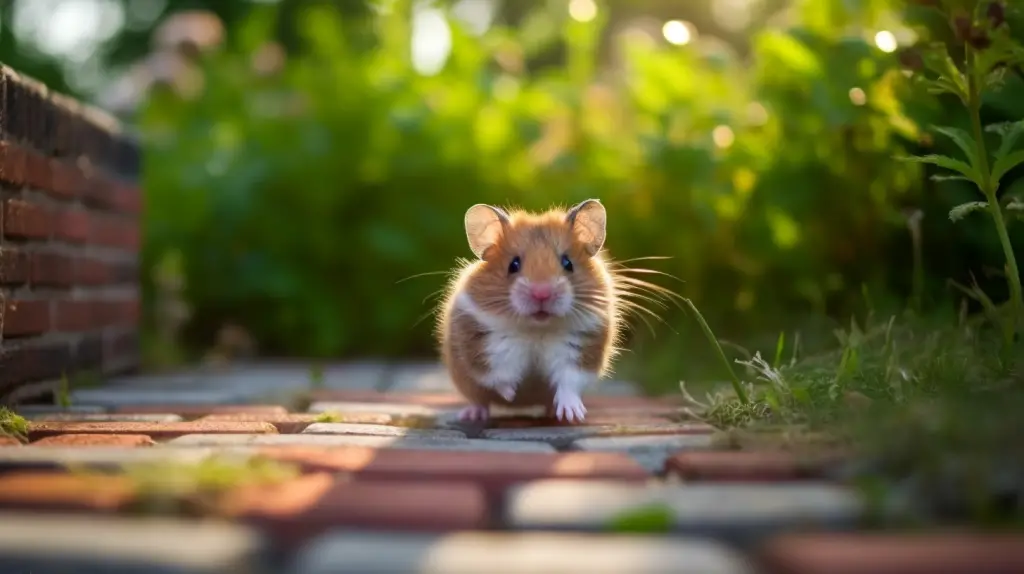Campbell’s Dwarf Hamster Care: Food, Habitat, Health, and More Tips
Though Campbell dwarf hamsters are wild, they have a friendly nature. People are now keeping them as a pet for their cute appearance, friendly nature, and low maintenance.
But the question is, how to take care of a Campbell dwarf hamster? You need to give it a cage with at least 360 square inches. There should be proper ventilation, bedding, toys, and a clean environment. And Grains, pellets, seeds, proteins, and veggies should be given time with the proper amount. Change the bottle regularly and fill it with clean water. You should take your hamster to the vet at least once a month as well.
With less effort, you can make your pet happy. Here you can get a clear idea about the food, habitat, and health care of Campbell hamsters below. So keep reading.
How to Take Care of Campbell’s Dwarf Hamster?
Taking care of Campbell’s dwarf hamster is almost similar to the other hamsters. You can easily make them happy with less effort.

- They need a spacious house to rest in.
- You should also provide them with good quality breedings as they love to chew and hide on them.
- Give them a proper diet timely to maintain their good health.
- Provide them with clean water and change the water timely.
- Toys and accessories are also important. These things can keep their mind diverted from stress. They love new toys and accessories. So, sometimes treat them with new toys and their favourite foods. These things will help you to develop a stronger bond with your pet.
- Take your pet out of the cage for exercise every day at a fixed time.
- Give it a home tour or take it out in the field.
- Clean their cage and bedding regularly. A bad environment can make the sick and prone to many infectious diseases.
- Take your pet Campbell for a regular check-up once a month.
Habitat for A Campbell’s Dwarf Hamster
To make the cage suitable for the Campbell hamster, you need to take care of certain things. You should be careful about the cage size and type, bedding, toys, and many things. Go through the following things to get a proper idea about all these things.

Size And Type of Cage
Your hamster is a tiny animal that does not mean it can live in a small house. There should be space for playing or movement for the hamster. Many people use glass and plastic cages. But these cages prevent ventilation.
- Metal cages are good for the little hamster and the base should be solid.
- It will be best if the floor is at least 360 square inches.
- Also, the cage should be easy to clean.
Bedding
In the wild environment, hamsters chew many things to sharpen their teeth. But in the case of a pet hamster, they can not get any chewable things to give shape or sharpen their teeth. So, they need some commercial bedding to chew, hide or burrow.
- You should give it safe bedding like aspen shavings, crumpled paper, or paper-based bedding. Hamsters sometimes eat their bedding. These types of bedding are easily digestible and will not cause any health hazards.
- But wood shavings are not good for them. Wood shavings can obstruct the GI tract and irritation in the respiratory system.
Decoration
Besides the bedding, the hamster needs some accessories and toys. Hamsters with more toys are happier than hamsters with fewer toys.
- You can give them wheels, running balls, chew blocks, and bridges. They can enjoy their free time playing with these toys.
- The toys should be blunt. Sharp toys can harm them.
- You should frequently change the decoration. Hamsters enjoy new looks and become more curious about the pattern of their house.
- You should also add new accessories and toys while decorating. You can use the old toys and some new ones in the next decoration.
Location
Campbell’s dwarf hamster easily gets stressed by loud sounds and with other pets.
- So keep their cages away from other pets. The place should be quiet and free from noise.
- Also, there should be proper ventilation available.
- The cage should not be in contact with direct sunlight.
Cleaning
Cleaning the cage and bedding is important.
- You should clean the cage at least once a week.
- Also, it is important to clean the bedding daily.
- Throw the leftover foods, droppings, and solid bedding.
- Use a 3% bleach solution to clean the bedding.
- Properly rinse the bedding with water to wash out the bleach.
- Then fully dry the bedding before use.
- You should also clean the bars of the cage regularly as the hamsters are often seen chewing the bars.
- Follow these things to give your pet a safe home. A good living place can make them happy and free from stress.
Food Management of A Campbell’s Dwarf Hamster

- You should give fresh food to your hamster.
- They love to take pelleted foods, seeds, grains, fruits, and veggies.
- Cook them chicken, turkey, or egg for better health.
- You can also provide them with mealworms and crickets.
- Give them dietary fibers like slices of carrot, broccoli, and apples. But you should not let veggies and fruits be the main source of food. If you do so, it can cause diarrhea or wet tail, bloating, and gas. Use these foods as a treat and give them in a limited amount.
- Never feed your hamster chocolates, junk foods, caffeine, or processed foods. These are toxic for them. These can lead to diabetes, fatigue, and even death.
- Try to avoid salty, sugar, and fatty foods.
- Give them chewable sticks. Sometimes the pet hamster’s teeth are overgrown. It did not let the hamster eat. You can keep this problem away by giving them chewable sticks. These sticks will help them to get a comfortable length of the teeth.
- Finally, give them fresh drinkable water. Do not give water in an open container. The hamster can get wet and sick. Rather give them a water bottle.
- Change the water daily and fill it with fresh water. Be careful about the water bottle. It should not leak.
Health Care of A Campbell’s Dwarf Hamster
Providing a good home and good food is not enough for your hamster. You should be careful about your pets’ health. They need exercise to prevent diabetes, fatigue, and heart disease.

Exercise
- For better health, you should take your hamster for exercise and grooming.
- You should make a separate room for exercise.
- Keep your pet in that place daily at a fixed time for at least thirty to forty minutes. Here you should keep a running wheel, running balls, hamster tubes, and stairs.
- The toys should be in proper shape.
- You should monitor your pet during the exercise.
- Take your pet out of the home for refreshment.
Diseases

Campbell hamsters are more prone to diabetes and glaucoma.
- Symptoms of diabetes are that your hamster will be more thirsty and urinate more than regularly. There will be a sweet smell coming out from the urine.
- Another disease is common to this type of hamster. Wet tail or diarrhea of hamsters can make your hamster severely sick.
- Your hamster may also be affected by some rare diseases like heart disease and cutaneous botryomycosis. All these diseases will make your hamster less active, lethargic, and cloudy eyes.
- Overgrowth of teeth is another common problem in hamsters. If you find an overgrowing tooth, let it trimm or go to the veterinarian.
- If you find any of your hamsters having hair loss or itching skin, immediately separate it from others. It could be a skin infection and can affect the other hamsters.
- Take your hamster to a well-known veterinarian without further delay.
Visit to Veterinarian
- Visiting the veterinarian at least once a month is mandatory.
- If you find any symptoms like weight loss, loss of appetite, coughing, sneezing, skin lesion, hair loss or bloody droppings, take it immediately.
- Even if your pet is not sick, take it to the veterinarian for regular check-ups. It is very important to confirm that your pet is healthy and active.
FAQs
These are some frequently asked questions by people about Campbell dwarf hamster care.
Q: Can I keep my dwarf hamsters in the sun?
No. Although sunlight is necessary, you should not keep your dwarf hamster in sunlight. They are sensitive to sunlight. Try to keep the cage away from sunlight and keep the light off both day and night.
Q: Can I bathe my dwarf hamster?
Yes. You can bathe your dwarf hamster occasionally or with the vet’s suggestion. Hamsters do not need an additional bath for cleaning. You can occasionally bathe it to remove urine stains or fecal material.
Q: Can I feed cheese to my dwarf hamsters?
No. You should not feed cheese to your dwarf hamster. Though some of them like eating cheese, it is very harmful to them. Cheese contains a good amount of fat which can make them fatigued or diabetic.
Conclusion
A hamster’s cage should be kept in a ventilated place free from loud sounds and other animals. Here you should provide all the requirements your hamster needs. You should give safe chewable bedding and toys for them. They can trim their teeth and enjoy their time with these things.
You need to give them a proper diet. It should contain protein, fiber, and vitamins. Changing the water from time to time and giving clean water is important. Immediately take your pet to the vet in disease conditions. Also, take it at least once a month for regular check-ups and make sure your pet is healthy.




